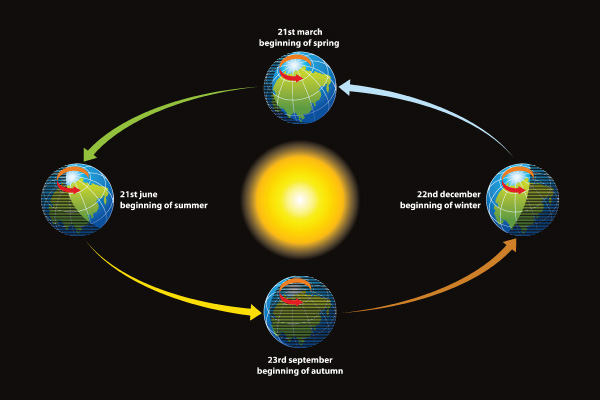Celebrating the Fall Equinox

The first day of autumn is next Wednesday, September 23! Scientifically known as the autumnal or fall equinox, this has long been celebrated as a time whenthe world is in balance. It’s a great opportunity for classroom study on the Earth’s movement in the Solar System, as well as the chance for a funcelebration of the season.
Historically, this has been the time to gather harvests and prepare for winter. In Social Studies discussions, we can examine the ways in which the equinoxhas been celebrated in different cultures.
The Fall Equinox in History and Culture
The idea of a harvest festival is nothing new.
- In ancient Greece, Oschophoria was a fall festival to celebrate the harvesting of grapes for wine. Greek mythology also brings us the goddess Persephone, doomed to spend six months of the year in the underworld with her husband Hades. Persephone’s mother Demeter, the goddess of the harvest, mourns her daughter’s demise, causing the Earth’s crops to die.
- In the 1700’s, the Bavarians created Oktoberfest, a time of feasting and merriment, which begins the last week of September.
- China's Mid-Autumn festival is celebrated on the night of the Harvest Moon, and honors family unity.
- Long before the Pilgrims arrived, the native peoples of North America celebrated the autumn harvest with thanksgiving festivals: feasts, games, and even matchmaking between neighboring villages.
- The Christian church replaced many early pagan equinox celebrations (still celebrated by pagans as “Mabon”) with Christianized observances, such as Michaelmas, which falls on September 29.
Classroom Activities
To download a free copy of these activity guidelines, please click here.
Elementary School:
- Plan a Fall Feast of symbolic foods, such as bread (grain), squash, corn, apples, cider and grape juice (wine). Decorate the classroom using fall crafts the students have made.
- Tell the mythological story of Demeter and Persephone, explaining how ancient civilizations used multiple deities to understand the world around them. Then, to represent the six pomegranate seeds that Hades fed to Persephone, cut up a pomegranate and let the students eat the seeds.
- Use the concept of “ kinesthetic astronomy” to help students understand the orbit and rotation of the Earth. The students use their bodies to model the objects and movements in the solar system, rotating and orbiting at the same time around a basketball “sun.” Click here for more specifics.
Middle School:
- The kinesthetic astronomy exercise (above) is great for middle school students, too!
- Demonstrate how latitude and the sun’s angle affect the length of shadows – Go outside at noon and have students partner-up to measure and record each other’s shadows. Bring them back each month for the same activity, at least through the winter solstice (December). Create a graph using the recorded lengths.
- Using templates such as the sundial from the Sandburg Planetarium , students can create sundials to study the relationship between the length of the gnomon shadow and the time of day.
Whatever grade-level you teach, the fall equinox gives you a great excuse to get outside and enjoy the event with your students. Also, encourage them toreflect on their achievements and experiences so far this year, and celebrate their “inner harvest.”
What are your ideas for bringing the Equinox to life in your classroom?
If you have a story or tip, please share!
